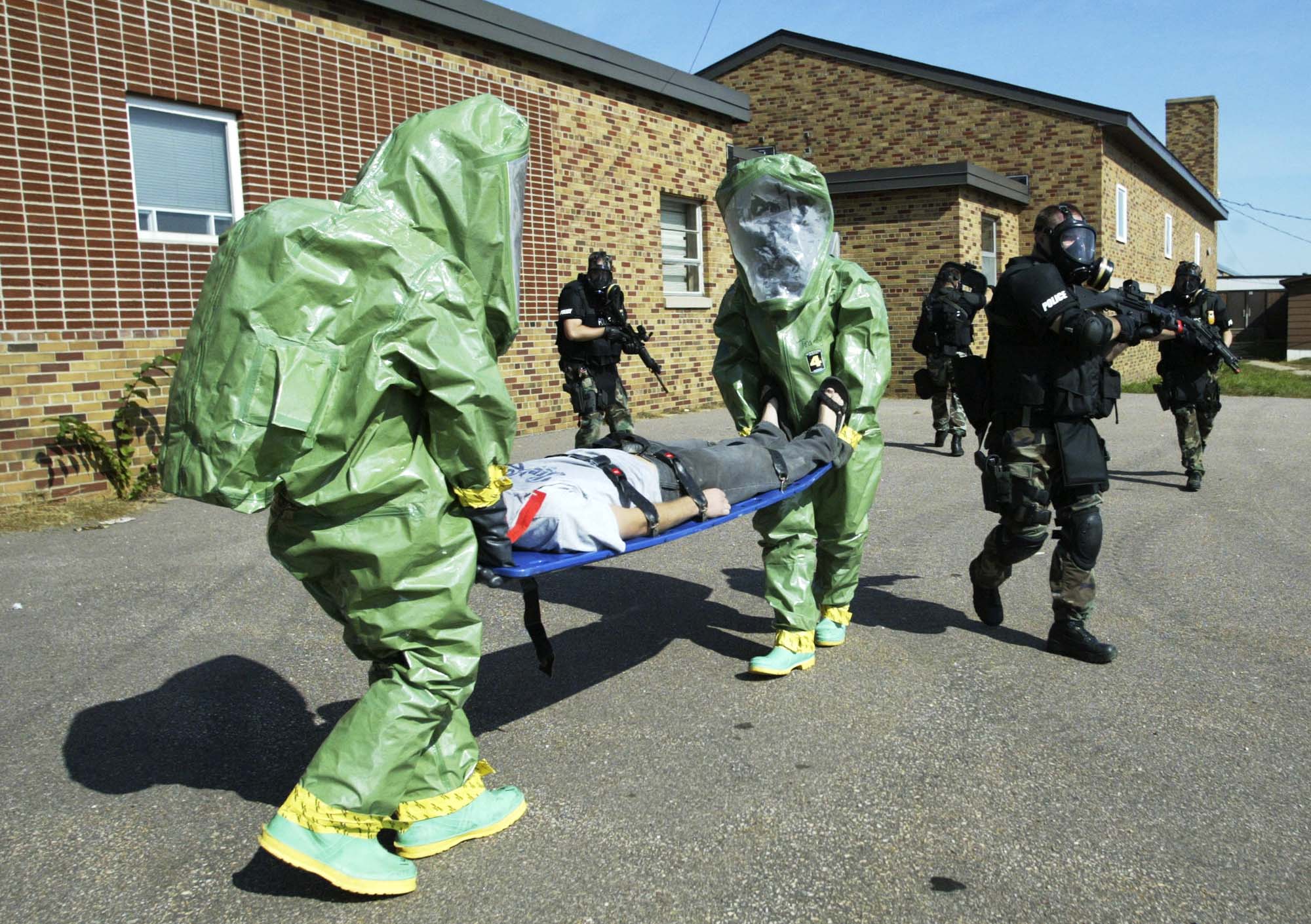
Bioterrorism and Public Health Service: Defining Management and Treatment Systems
Published first on OMICS Publishing Group
This article was originally published in a journal by OMICS Publishing Group, and the attached copy is provided by OMICS Publishing Group for the author’s benefit and for the benefit of the author’s institution, for commercial/research/educational use including without limitation use in instruction at your institution, sending it to specific colleagues that you know, and providing a copy to your institution’s administrator. All other uses, reproduction and distribution, including without limitation commercial reprints, selling or licensing copies or access, or posting on open internet sites, your personal or institution’s website or repository, are requested to cite properly.
Authors: Wanda D’amico and Roberto Mugavero
Keywords: Biological; Biosafety; Biosecurity; Bioterrorism;
Chemical; European; Health Safety; Italian; Laboratory; Nuclear; Radiological
Abbreviations: BASIS: Detect-to-treat technology; BRICK: Bio Risk Initiative for Capacity building and Knowledge base development; BSA: Biosafety Associations; BSCL: Biosafety Cabinet; BLS- 1: Biosafety Level 1 (BSL-1); BWT: Biological and Toxin Weapons Convention; CBRN: Chemical, Biological, Radio Nuclear; CDC: Centers for Disease Control and Prevention; CWTC: Chemical Waste Treatment Centre; DSUS: Distributed Sampling Units; DNA: Deoxyribo Nucleic Acid; EBSA: European Biosafety Association; ECDC: European Centre for Disease Prevention and Control; EC: European Commission; EMEA: European Evaluation of Medicinal Products; EURONET-P4 : European Network of P4 Laboratories; EU: European Union; GMMs: Genetically Modified Micro-Organisms; GHSI: Global Health Security Initiative; HANAA: Handheld Advanced Nucleic Acid Analyzer; HSC: Health Security Committee; HSR: Health Systems Response; HEPA: High Efficiency Particulate Air filter; IFBA: International Federation of Biosafety Associations; LAI: Laboratory Associated Infections; LIDARs: Light Detection and Ranging; LIBS: Laser-Induced Breakdown Spectroscopy; NIAID: National Institute of Allergy and Infectious Disease; OSHA: Occupational Safety and Health Administration; PCR: Polymerase Chain Reaction; WHO: World Health Organization;
Introduction
Few will recall that little more than a decade ago, the possibility of biological terrorism was neither anticipated nor understood by professionals or the civilian community. The effects of a nuclear attack were documented and tangible. Chemical accidents were not uncommon, but the potential catastrophe of an epidemic following the deliberate release of a biological pathogen was difficult to comprehend. We are living in an era of uncertainty and change and the use of biological weapons is a serious problem of public health that increases the probability of “possible incidents” related and not just to bioterrorism. Some bacteria, viruses and toxin are greater problem for human health.
They are employed better in agriculture, in food manufacturing and have an effect even on Environment, too. Terrorists used biological for their virulence, toxicity, transmissibility and their lethality, but what really makes those particular microorganisms used as weapons is the high pathogenicity, which can grow from a single organism or a cell. Biological agents have: the relatively low costs of production are sometimes readily available and not have significant problems regarding storage and transport. Moreover, terrorist organizations, in addition to naturally existing pathogens, may grope to use genetically modified micro-organisms (GMMs).
Experts think that toxins in the order up to a thousand, can be obtained from genetic or natural sources, but not all would be used as biological weapons; monitoring the illegal subtraction, even small quantities, it is impossible!! Pathogens are difficult to detect: they are colorless and odorless and have incubation times ranging from 48 hours for respiratory anthrax, 21 days, for Q fever. Period of incubation at the same time an advantage and a drawback; an advantage because it opens up a time-window that allows you to quarantine and treat infected individuals and vaccination of others; a drawback because often it is difficult to identify the disease.
At the initial stage many diseases present symptoms similar to flu: patients tend, thus to follow their normal rhythm of life, behavior that in case of transmissible diseases could to lead to widespread contamination. For most diseases caused by agents used in biological warfare, there are treatments and/or vaccines in order to permit the deployment of reaction mechanisms and, especially, the adoption of medical countermeasures, is essential a timely dejection of attack. Adequate background data on the natural behavior of infectious diseases facilitate recognition of an unusual event and help determine whether suspicions of a deliberate cause should be investigated. Routine surveillance systems, for epidemic-prone and emerging infectious diseases, enhance the capacity to detect and investigate deliberately caused outbreak.
Even a very small quantity of pathogen will cause disease for example the tularemia requires as few as 10 organisms to infect therefore sensors need to be sensitive for a minimal presence of pathogens. ―Detect to protect” biological detection technology is currently unavailable. Available instruments are usually large, slow and expensive. The more reliable the detection instrument is the longer it takes to identify the defined threat. Thus, the main goal of biological detection is to provide sufficient warning for responders order to reduce the number of victims.
Biodefense strategies are formed by a combination of several layers of detection. A first layer is composed of standoff detectors; a second layer of protection is provided by the use of point detectors; lastly, the collection of epidemiological data can support and complement the use of biosensors. Several technologies, such as Doppler RADARs, LIDARs (Light Detection and Ranging) or LIBS (Laser-Induced Breakdown Spectroscopy), can be used for standoff detection of biological agents. They rely on radio waves or light reflectance techniques to screen clouds for airborne pathogens. However, applications for these technologies are mostly military and their efficiency is still limited.
Reality now is that biosecurity is now benefiting from the collective intense interest of political leaders or the funding commitments that followed the 2001 anthrax attacks. With the passage of time, the initial sense of urgency in efforts to shore up the nation‘s biosecurity


